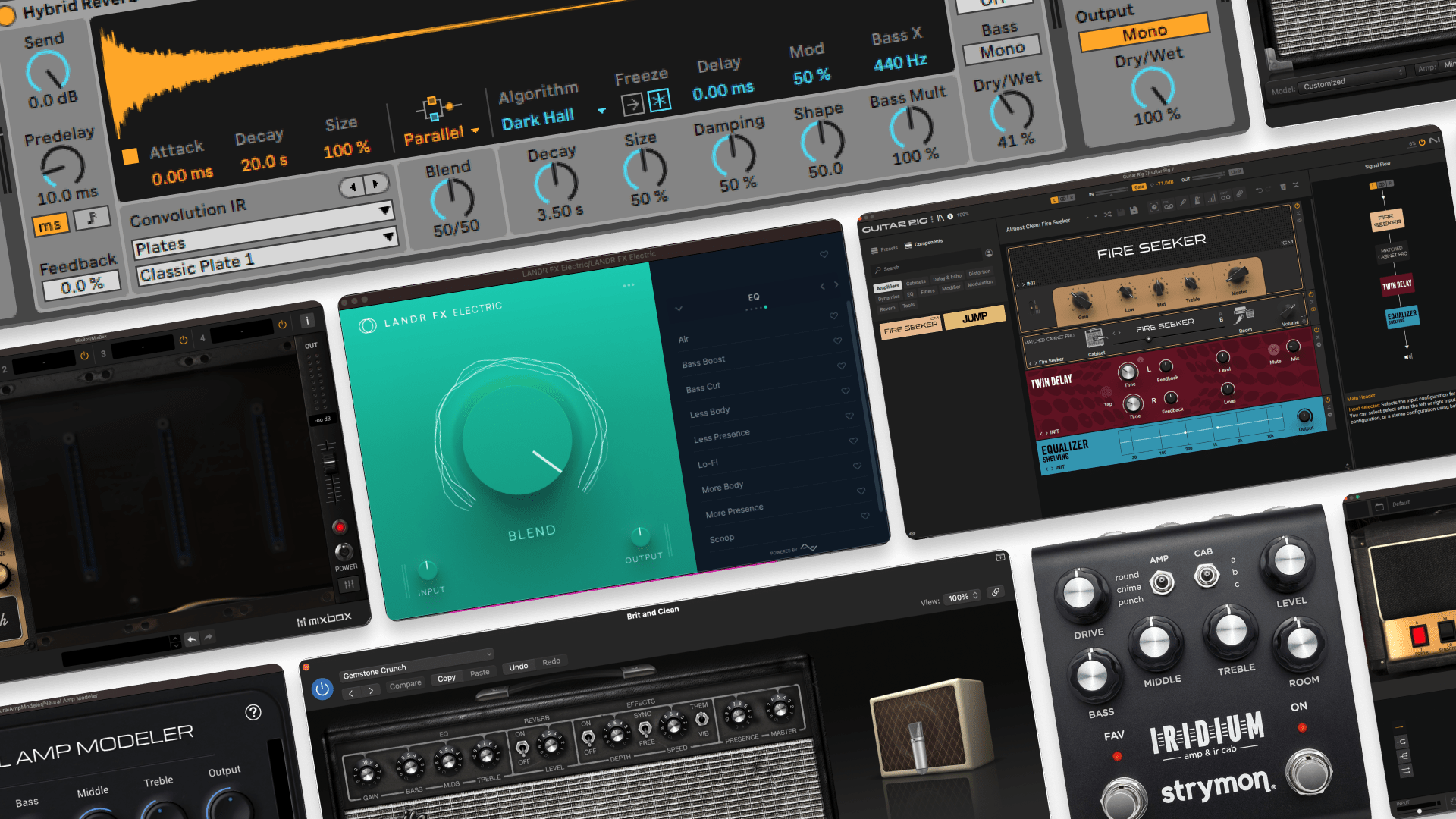
Mixing vs. Mastering: The 5 Main Differences
Many new producers wonder about mixing vs. mastering.
It’s not always clear how each stage in music production has the biggest influence—or how they affect your workflow.
Mixing and mastering seem related, but there are a few key differences you need to understand to get the best results from each.
Knowing what is the difference between mixing and mastering will help you make the right decisions during your mix to get the best master you can.
Let’s get started.
What is mixing?

Mixing is the process of blending and combining all the recorded tracks in a DAW session.
When you record multiple tracks, they add together at your master bus and pile up.
If you don’t control the frequency balance and dynamic range of each individual track, your sounds will all overlap and you won’t be able to hear them individually.
You might notice bass frequencies at the low end sounding muddy or muted, in the middle range you might notice instruments masking each other clashing and reducing clarity, or you might hear unpleasant harshness at top-end of frequencies.
Mixing is the process of blending and combining all the recorded tracks in a DAW session.
Mix engineers use tools like compression, EQ, and reverb to integrate sounds together and make sure they don’t compete with one another.
They also carefully choose the level and pan position of each track to create the overall balance and sense of space in the track, and they tastefully add effects to serve the music and make the right parts shine.
The carefully considered decisions a mix engineer will take are why mixing is often considered to be much more an artform than a science, and it’s why certain mix engineers have a specific sound over others.
What is mastering?

Mastering is the final step in the production process of a song. It’s the stage where your finished mix gets its sonic presentation for release.
Think of it like the glue, varnish and polish that optimizes playback quality on all devices.
Mastering engineers take the stereo bounce of your mix and apply further processing to get it ready for anywhere it might end up in the world.
That process typically includes tools like EQ, compression, limiting and stereo enhancement.
Here’s an example of what a mastered track sounds like when compared to an unmastered one.
What does a mixed song sound like?
It’s tough to describe mixing using words only, so let’s take a look under the hood at what mixing can do for a song.
For this example, we took samples from a construction kit and simply layered them together, changing nothing about their over all characteristic.
Grab some headphones, and check out how this unmixed stack of loops from the construction sounds.
Notice how the bass is a little bit muted, and the vocals are buried behind the chord pads.
It’s safe to say that the layered loops sound very flat, with little dynamics. Plus the vocals aren’t done justice, instead they’re buried by the synth pad.
After some EQ, compression, reverb, panning and level adjustment the result is a clearer track with vocals that shine through, with bass that punches a bit harder. Here’s how that sounds:
Listen to how the vocals are bit more present, with added space for each instrument alongside punchier bass.
That’s what mixing can do for track, small tweaks to EQ and panning can widen the stereo field and make sure that each instrument in the track sits in the right place, while tools like reverb and compression will add space and dynamics to track, ultimately making the song more interesting and pleasing to the ear.
What does a mastered song sound like?
Mastering is much more subtle than mixing, but the quick answer is that a mastered song will sound louder than a mixed song.
The goal of mastering is to prepare a song for commercial release, and ensure it meets loudness standards set by radio and streaming platforms.
Of course, mastering also will add slight touches of EQ and compression to a track, but these changes shouldn’t be nearly as dramatic as mixing.
Here’s what LANDR’s AI-mastering did for our mixed example.
Track is noticeably louder than the mix-down, while still maintaining dynamics and clarity between instruments. Arguably it sounds a bit more open and spacious even.
What’s the same between mixing vs. mastering?
Those definitions might make mixing and mastering sound similar—and they are.
Mastering engineers take the stereo bounce of your mix and apply further processing to get it ready for anywhere it might end up in the world.
Some of the tools and techniques used in both are related. Mastering is done using many of the same kinds of processing that you apply in your mix.
Mixing and mastering are both done by engineers to help turn raw tracks into a satisfying recording.
The differences may seem subtle, but they’re important when it comes to the role that each step plays in the lifecycle of a song.
The 5 main differences between mixing vs. mastering
With the similarities out of the way, let’s dive into what sets mastering apart from mixing.
Here are five reasons mixing and mastering should be considered completely separate processes:
1. Mastering processes a stereo mix
When you’re mixing a song you have access to all the recorded tracks individually.
That means you’re free to turn them up or down, change the pan position or even remove them entirely from the mix.
Mastering is only ever applied to a finished stereo mix.
That means the mastering engineer has no control of the contents of the mix. They can only affect the entire stereo track.
That’s one of the reasons mastering processors typically create much more transparent changes to the sound.
Mastering is only ever applied to a finished stereo mix.
2. Mastering mostly makes subtle changes
During the mix, it’s not unusual to make significant changes to a sound for it to fit alongside your other elements.
Sometimes you might high pass most of a sound’s low end to make room to mix your kick and bass.
Or maybe you apply intense compression for a stylish squashing effect.
Mastering takes the complete opposite approach. Compression and EQ are still used, but mastering engineers almost never make broad, sweeping changes to the sound.
Instead, the first rule of mastering is “do no harm.” Any changes the frequency balance or dynamics of the song will be transparent.
That means that at times you might not even notice a big difference in the basic tone of your track after mastering—but that’s a sign that you’ve done a good job mixing your song!
3. Mastering uses specialized tools
The plugins or hardware processors used in mastering have familiar categories like EQ and compression, but they’re pretty different from the kind you mix with in your DAW.
Mastering EQs and compressors are designed for ultra-high performance and transparency.
Think about it. If you’re affecting every single sound in your mix with an EQ, it better do its job as well as it possibly can!
Mastering hardware is some of the most expensive gear you can imagine. In some cases a single stereo channel can cost well over $10,000!
And that’s before you even factor in acoustic treatment and high end studio monitors.
Experienced engineers will tell you that the environment where you record and mix is just as important as the gear you use—if not more.
That goes double for mastering. Mastering studios spend enormous amounts of money to make sure their listening environment is as close to neutral as it can possibly be.
4. Mastering focuses on consistency and presentation
The main changes that happen in mastering are to make your song sounds more consistent across different playback systems and make sure it fits in alongside other tracks in a commercial library.
Listeners hear music in more diverse listening environments than ever before.
Listeners hear music in more diverse listening environments than ever before.
Your song has to sound as good as it does in your home studio anywhere your fans hear it.
That means it needs to be optimized for playback on everything from a pair of earbuds to an enormous club sound system.
It’s harder than it seems to achieve that balance, but that’s where mastering comes in.
One of the most critical tasks in mastering is to create a compelling balance of frequencies where nothing stands out—no matter what playback device you’re listening on.
It takes a good ear and a lot of expertise to get it just right.
5. Mastering delivers technical standards
All the music you consume on a platform like Spotify or Apple Music has to meet strict technical standards.
The most important of these are the targets for loudness and dynamic range.
Loudness seems simple—it’s just how loud something is right? Unfortunately, when you’re dealing with audio signals, it’s not very straightforward.
The way we experience loudness depends as much on our perception and cognition as the intensity of sound waves in the air.
For example, sounds can seem louder or quieter depending on their frequency.
That’s why the audio industry has developed a handful of measurement standards to ensure that mastering engineers are all aiming for the same target.
These standards are difficult to understand and require special plugins to meter effectively.
Mastering engineers use them to create the ideal balance between dynamic range, headroom and perceived loudness.
Keeping all that in mind while still processing the track in a musical way is a pretty big challenge!
That’s why using AI to master your music can take away so much difficulty.
LANDR is an instant fix for creating mastered tracks without any of the hassle of complicated metering or generic presets.
Mixing and mastering explained
Knowing the difference between mixing and mastering is key to understanding how a song goes from idea to finished release.
Now that you understand the difference between these two phases in the lifecycle of a song, get back to your DAW and keep working on your masterpiece.
Gear guides, tips, tutorials, inspiration and more—delivered weekly.
Keep up with the LANDR Blog.



